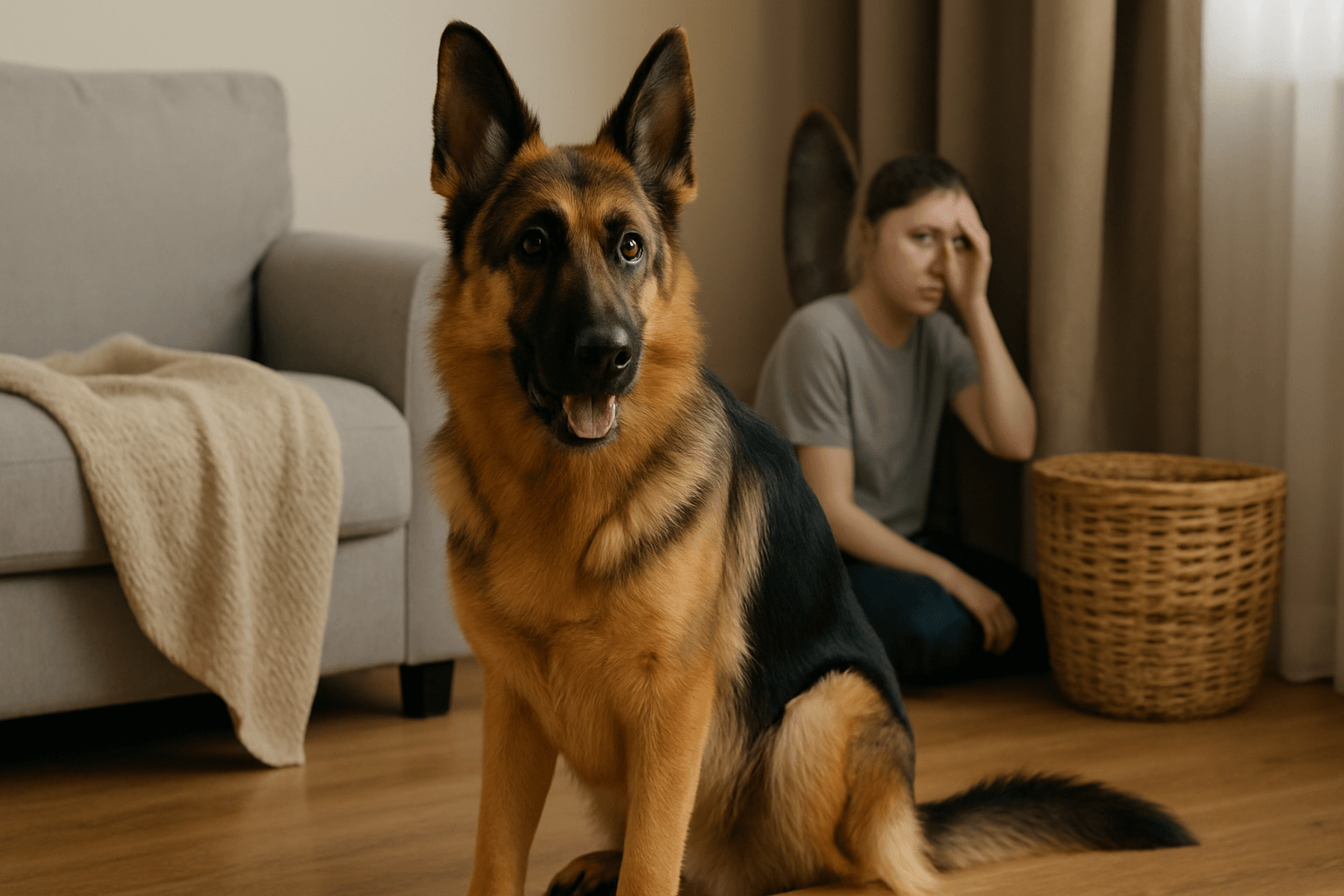German Shepherds are fiercely loyal, naturally alert, and famously protective. But what happens when their guarding tendencies seem to tip into overreactivity, fear, or even aggression? If you've ever asked yourself, "Is my dog protecting me or panicking?"—you're not alone. Let’s break down the difference between healthy protection and anxiety-driven behavior.
Understanding the Protective Nature of German Shepherds
Originally bred as herding and working dogs, German Shepherds are wired to assess their environment and act when they sense danger. True protective instinct looks like:
- Calm confidence around strangers, unless provoked
- Stepping between their human and a perceived threat, but not attacking
- Responding to commands to disengage
A well-trained German Shepherd will show a composed alertness, not impulsive aggression.
What Anxiety-Driven Aggression Looks Like
Anxiety-based behaviors often mimic guarding—but there are key differences. Dogs with anxiety may:
- React to minor stimuli like a doorbell or passing jogger
- Bark excessively, pace, or show signs of hypervigilance
- Have trouble calming down after the trigger is gone
- Ignore training cues when overstimulated
These behaviors usually stem from fear, lack of confidence, or trauma—not true protectiveness.
Distinguishing Normal Guarding from Anxiety-Driven Aggression
This is where many pet parents struggle. Here's how to tell the difference:
- Context: Guarding is situation-based. Anxiety is often chronic or irrational.
- Body Language: A guarding dog is still. An anxious one may pant, shake, or dart eyes.
- Recovery Time: Protective dogs recover quickly. Anxious dogs stay aroused for longer.
- Training Response: Dogs with anxiety often struggle to respond to familiar commands.
Learning to read your dog’s emotional state is crucial for both their safety and yours.
Real-Life Example: Max’s Story
Max, a 4-year-old German Shepherd, was brought to me for reactivity toward guests. His parents assumed he was just “super protective.” But through observation, we saw he barked long after the visitor left, showed tail-tucking, and had difficulty settling. After implementing confidence-building exercises and a behavior modification plan, Max became more relaxed and manageable.
Tips for Managing Anxiety in German Shepherds
- Use consistent routines to reduce uncertainty
- Incorporate structured training with positive reinforcement
- Provide plenty of physical and mental exercise
- Consider tools like calming chews, Thundershirts, or white noise machines
- Work with a certified trainer or behaviorist if needed
Feeding, Supplements & Products That Help
- Food: Opt for high-protein, low-filler diets that support stable energy
- Supplements: Look into L-Theanine, chamomile, or omega-3s for mood support
- Products: Adaptil Calm Home Diffuser, Zesty Paws Calming Bites, Thundershirt
When to Seek Professional Help
If your German Shepherd’s behavior is disrupting your household, putting others at risk, or making your dog visibly distressed, it’s time to consult a vet or canine behaviorist. Anxiety disorders are treatable, but require a proactive approach.
Final Woof
Protective instinct in German Shepherds is a strength—but when it’s confused with anxiety-driven aggression, it can become a challenge. Learn to observe, respond, and support your dog’s emotional needs, and you’ll build a stronger, safer bond.
Frequently Asked Questions (FAQs)
1. What’s the difference between guarding and anxiety in dogs?
2. How can I tell if my German Shepherd is anxious?
3. Are German Shepherds naturally aggressive?
4. What are some calming products that work?
5. Should I punish aggressive behavior?
6. Can training help reduce anxiety-based aggression?

About SniffnTail
SniffnTail is your go-to destination for everything pets. From helpful advice, tips, and insights to thoughtfully selected products and resources, we’re here to support pet owners at every stage of their journey. Whether you're caring for a playful pup, a wise old cat, or anything in between, SniffnTail offers tools and knowledge to make pet parenting easier and more joyful.
Related Articles
 Training & Behavior • 7 min read
Training & Behavior • 7 min readBorder Collie Separation Anxiety: The Working Dog's Dilemma
Learn how to manage separation anxiety in Border Collies, a high-energy breed prone to job-oriented anxiety when left idle. Discover expert tips on mental stimulation, daily routines, and effective bonding.
 Training & Behavior • 5 mins Read
Training & Behavior • 5 mins ReadWhy Microchipping Matters More Than Ever
Picture the devastation of losing your dog — only to discover there's no possible way for someone to recognize and return your pet. Microchipping is where that ends. As a permanent, foolproof form of pet identification, microchipping your dog greatly improves the possibility of safe return should they ever get lost or stolen.
 Training & Behavior • 6 mins
Training & Behavior • 6 minsDogs Are Creative Geniuses, Study Says: New Research Reveals Surprising Canine Smarts
Discover what new studies reveal about dog intelligence and creativity. Learn how canine cognitive abilities are more advanced than we once believed.

